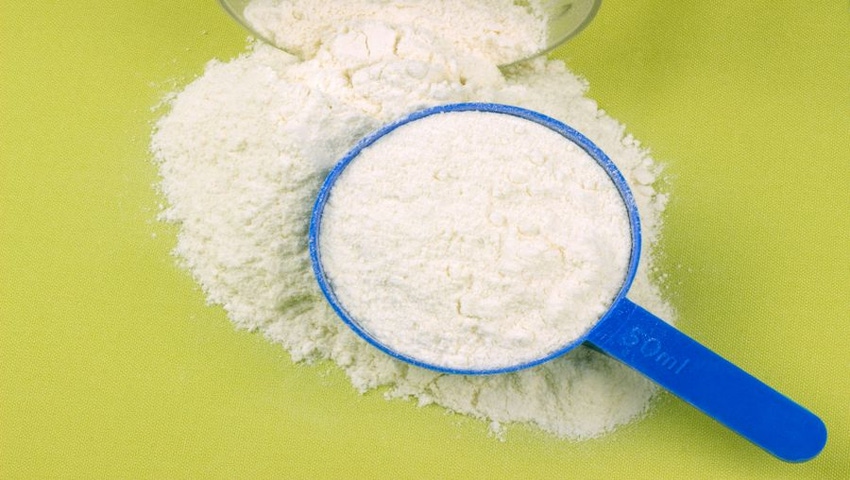Supplement brands can ensure their protein products aren’t spiked by understanding how added nitrogen fools lab tests and knowing how to choose the best assay for their products.

The last few years, controversy in the sports nutrition industry has surrounded the practice of “protein spiking" and the proper way to calculate protein levels in dietary supplements. Protein spiking involves adding non-protein nitrogen (NPN)-containing ingredients to a protein supplement to artificially increase the amount of the nutrient declared on the label. While the FDA appears to be disinterested in this trend (having engaged in little to no enforcement activity), the plaintiffs’ class action bar has been actively pursuing companies that are either intentionally or unknowingly overstating the amount of protein in their products. Companies selling protein supplements, particularly those whose products are contract manufactured, need to be mindful of this practice and take proactive measures to avoid allegations of spiking.
Protein, by definition, is a chain of amino acids connected by peptide bonds. NPN ingredients include free proteinogenic amino acids (e.g., arginine and glycine), non-proteinogenic amino acids (e.g., norvaline) and other nitrogen-containing compounds (e.g., taurine and creatine). These substances can account for a significant amount of nitrogen in a product. For example, arginine has three times more nitrogen than whey protein, and creatine has 1.5 times more. In some lawsuits, it has been alleged that the protein content on product labels is inflated as much as 60 percent. Of course, non-amino acid substances are not components of protein and do not play a role in protein nutrition. While free-form amino acids are the building blocks of protein, they do not act like protein in the body, and they do not stimulate protein synthesis. Therefore, including these substances in the protein declaration is misleading and may render the product misbranded and/or adulterated, exposing companies to FDA enforcement as well as class action lawsuits.
21 CFR § 101.9(c)(7) permits, but does not require, companies to calculate protein on the basis of the factor 6.25 times the nitrogen content of the food determined by the AOAC International method of analysis, except when the official procedure for a specific food requires another factor. The regulation is vague and allows protein to be calculated as a factor of nitrogen content without defining what substances should be included in measuring such content. In addition, the AOAC test methods Kjeldahl and Dumas screen for total nitrogen content in a matrix which, in the presence of NPN ingredients, would be higher than the true protein content. This opens the door for unscrupulous companies to spike their protein products with NPN ingredients that are less expensive than high-quality protein, obtain a protein analysis that satisfies the regulation and make an inflated protein claim on their label. This also provides an opportunity for contract manufactures to spike protein products unbeknownst to own-label distributors.
It should be noted that not all uses of NPN ingredients are sinister. For example, many in the sports nutrition industry see value in adding creatine and arginine to protein supplements and purposely include these ingredients in their products with no intent to spike the protein level. Also, the free-form amino acid glycine is often added to protein powders to improve the texture, mouthfeel and taste.
In response to the gap in the regulations, the American Herbal Products Association (AHPA) and the Council for Responsible Nutrition (CRN) issued voluntary guidelines in 2014 stating that NPN substances should not be counted toward total protein content on product labels. Rather, NPN substances should be accounted for and subtracted from the total nitrogen content when protein is measured by nitrogen content. This way, only true proteins (i.e., substances that are chains of amino acids connected by peptide bonds) will be included in label declarations.
Also, in its comments submitted to FDA regarding proposed revisions to the nutrition labeling regulations, AHPA urged the agency to revise the protein regulation to require that the protein content declared in nutrition labeling be based on the nitrogen content of protein only, and not allow it to include the nitrogen content of NPN substances. According to the association, this would mean there are two appropriate methods by which protein may be determined: (1) by subtracting the quantity of NPN sources from the total “protein" calculated based on nitrogen content; or (2) by measuring the total amino acids in the food and subtracting the free amino acids present.
The best way to combat the problem of protein spiking is to understand the available test methodologies and potential limitations, and employ additional screening to ensure your products are not spiked. Two things to consider when measuring the protein content of a product are the methodology to be used and what to measure for. Numerous analytical methods are available for determining the total and free amino acid content of a food. According to the the Food and Agriculture Organization of the United Nations’ (FAO) 2013 report “Dietary Protein Quality Evaluation in Human Nutrition," “no one method of analysis is necessarily the best, with a variety of approaches being acceptable … [T]here is a diversity of food matrices, such that most laboratories adapt methods to best suit their applications." That said, the two most widely accepted methods for protein analysis are the Kjeldahl and Dumas AOAC methods. While utilization of these methods is acceptable, it is important to realize that they test for total nitrogen content in a food. Therefore, to determine the true protein content of a product, particularly in cases where it is evident that the product contains NPN ingredients, additional testing will need to be conducted along the lines of what AHPA suggested in its comments to FDA. Whatever combination of tests is used, the NPN substances should be accounted for and subtracted from the total nitrogen content. Also, brands need to ensure they are using a reputable laboratory that understands the importance of properly calculating protein content.
For companies that have their products contract manufactured, the protein spiking issue is particularly troublesome. It is important that brand owners engage with their contract manufacturers and choose trustworthy and well-respected manufacturers in the industry that strictly adhere to GMPs (good manufacturing practices). Also, own-label distributors should have comprehensive quality agreements with their contract manufacturers that clearly establish who is responsible for product testing, including testing for protein content.
Companies selling protein supplements need to properly calculate and declare the protein content of their products. Failing to do so could result in a class action lawsuit and a damaged reputation and brand.
Jacqueline Kuler, senior counsel at Amin Talati & Upadhye (amintalati.com), assists companies in complying with the various legal requirements applicable to the manufacture, marketing and distribution of foods, dietary supplements, drugs, medical devices and cosmetics. She works with companies in preparing legally compliant labels and marketing materials, including helping to develop substantiation, and advises in all matters relating to the manufacture and distribution of FDA-regulated products, including registration and listing requirements, GMP (good manufacturing practice) standards, adverse event and recall matters, and import/export issues.
About the Author(s)
You May Also Like






.png?width=800&auto=webp&quality=80&disable=upscale)